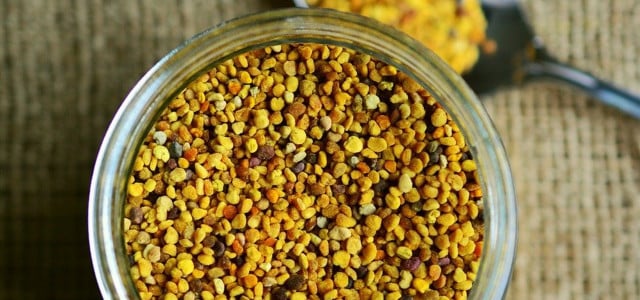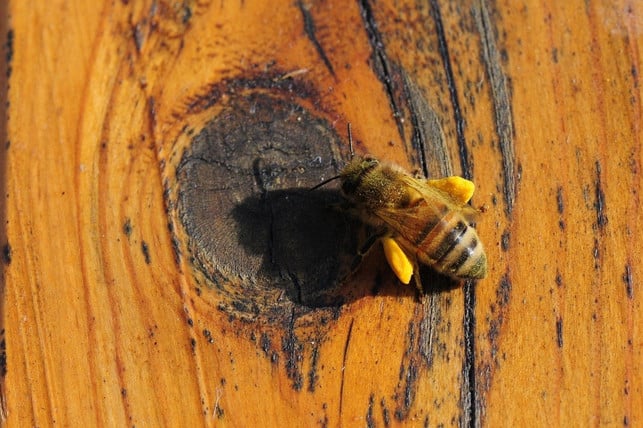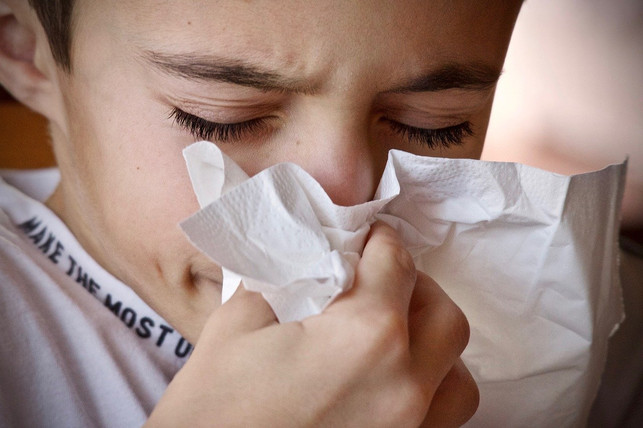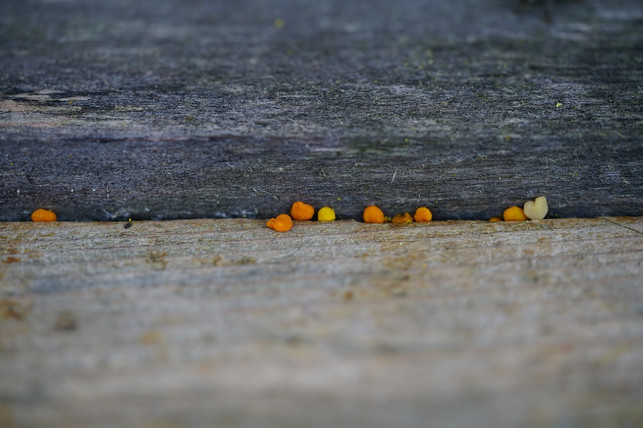
Bee pollen is considered a superfood because it contains many healthy ingredients. But what effect do they have exactly and how do they actually come about? Find out everything you need to know about bee pollen here.
Flower pollen is created from flower dust: bees collect it from the stamens of plants and then enrich it with nectar and enzymes. This causes the pollen to stick together to form larger grains. What we call pollen is a collection of thousands of tiny dust grains that together form a so-called panty. A pan is a grain weighing six to ten milligrams.
The bees not only add nectar and enzymes to the pollen so that it becomes manageable and they can bring it back to the hive in small portions. A certain enzyme also ensures that the pollen is preserved and protected from germs and fermentation processes. The enzymes make the pollen a food that is also edible for humans and is considered a so-called superfood due to its ingredients.
Actually, pollen actually serves as food for the bee colony: bees use it to feed their offspring and build up reserves of pollen for bad times. That’s why beekeepers should only collect a fraction of flower pollen for human consumption. They collect them using a special attachment that they attach to the entrance to the hive. When the bees loaded with the harvest pass through this process, they lose some of the pollen they brought with them. It can then be easily picked up.
Bee pollen ingredients: These are in the small grains

(Photo: CC0 / Pixabay / maria-anne)
Bee pollen has been known for some time as a superfood, i.e. a very nutrient-rich food. According to a 2015 study (“Bee Pollen: Chemical Composition and Therapeutic Application”), bee pollen is made up of around 250 components. The exact composition of these components varies depending on the origin of the pollen, the plants from which the bees collect it, and climatic conditions. An overview study from 2009 lists the following as some of these components:
- Vitamins
- Minerals
- Proteins
- Carbohydrates
- Fats
- Enzymes
- essential amino acids
Bee pollen is also very rich in protein. The protein content can vary, but according to the 2015 study it is around 23 percent. This considerable amount is not surprising, because the offspring of bees depend on food that provides a lot of protein.
The study also reveals that bee pollen contains around ten percent essential amino acids. These protein elements are vital because the body cannot produce them itself. That’s why we rely on a sufficient supply of essential amino acids in our diet.
According to the study, there is also a range of vitamins in bee pollen: the beads contain provitamin A as well as vitamins E, D, B1, B2, B6 and C.
When it comes to minerals, the Medical Tribune lists bee pollen, for example, as a good source of zinc. They also contain copper and iron.
In addition to all the healthy ingredients, there can also be less desirable substances in the flower pollen: For example, they can contain residues of pesticides. Dangerous pyrrolizidine alkaloids are also present in it, but according to experts, the amount of pollen from Europe is harmless.
Bee pollen: what effect do they have?

(Photo: CC0 / Pixabay / sweetlouise)
This abundance of nutrients is said to make bee pollen a real miracle helper for health. Among other things, the small beads are said to…
- strengthen the immune system and increase vitality,
- build and nourish muscles,
- strengthen the bones,
- combat asthma and allergy symptoms,
- improve sexual performance,
-
resolve digestive problems,
- could prevent certain diseases and alleviate their symptoms, for example colds or gastrointestinal problems.
However, you should be skeptical about such health promises: the actual therapeutic effect of flower pollen has not yet been sufficiently scientifically proven. Until now, tests could only be carried out on laboratory animals.
For example, one of these tests found that bee pollen could actually increase bone density in rats with osteoporosis. Another study on mice found that the flavonoids contained in flower pollen have great health-preserving potential: Flavonoids are secondary plant substances that have an antioxidant effect on the body. Scientists were also able to prove that a preparation made from flower pollen has an anti-inflammatory and pain-relieving effect on mice. However, studies that can reliably demonstrate all of these results and effects in humans are still pending.
Bee pollen is also considered a means of treating allergies to pollen and is said to have a positive effect on people with hay fever, for example. However, some studies have found that treatment with bee pollen can also cause the exact opposite, namely increased allergic reactions. That’s why it’s particularly important for allergy sufferers to only try bee pollen under expert medical guidance.
Bee pollen: recommendations for purchase and consumption

(Photo: CC0 / Pixabay / Hans)
Take flower pollen
Bee pollen is a natural product whose exact ingredients can vary. This means that it is not possible to generally predict how they can work individually. In any case, it is important to take the bee pollen exactly as directed by the manufacturer. Basically, you should start with a low dosage and then slowly increase it.
Buy bee pollen
If you want to try bee pollen, we recommend that you keep a few things in mind when purchasing:
- Bee pollen is available in various dosage forms, for example as granules, in combination with other bee products (for example in royal jelly or propolis), in capsule form or in drinking ampoules. With these products, pay attention to whether and which additives they contain.
- If you want to buy pure bee pollen, you can get it directly from a beekeeper. Many of them now offer pollen as standard and are happy to answer any questions about where the bees collected their pollen.
- If you buy bee pollen locally, you also avoid emissions caused by the transport of the grains: imported bee pollen often comes from Greece or Spain, for example.
- Make sure to buy organic bee pollen. They come from controlled organic beekeeping and beekeeping. Maybe you have a local beekeeper – or you’re looking for an organic beekeeping online. For example, ecological beekeeping means that the bees are allowed to build their own honeycomb.
- By choosing organic products, you also reduce the possibility of pesticide residues in the pollen. Organic beekeepers have to set up their hives according to special specifications. It must be ensured that within a radius of three kilometers there are nectar and pollen sources that essentially consist of organic crops and/or wild plants and/or crops that are treated using methods with low environmental impact. The Bavarian State Institute for Viticulture and Horticulture stipulates this in a binding manner.
Read more on Techzle\.com:
- Types of honey at a glance: You should know these
- Medicinal honey: difference, effects and application
- Is honey good for babies? You should know that
- Bee-friendly plants: The best ideas for the garden and balcony
** marked with ** or orange underlined Links to sources of supply are partly partner links: If you buy here, you are actively supporting Techzle\.com, because we then receive a small part of the sales proceeds. More info.